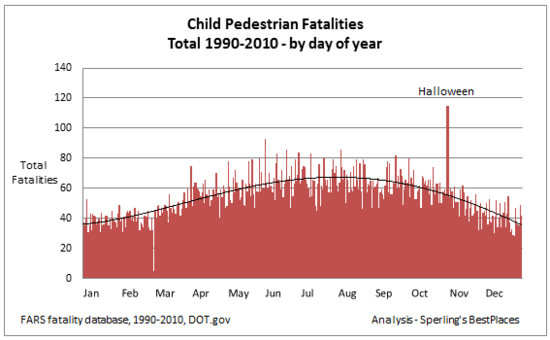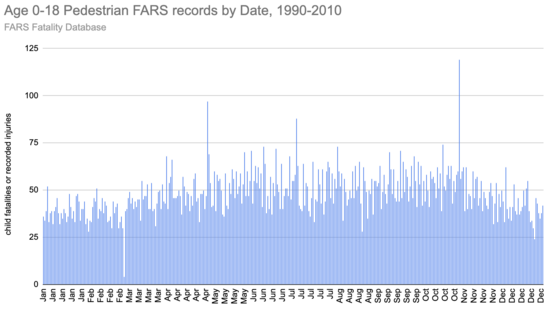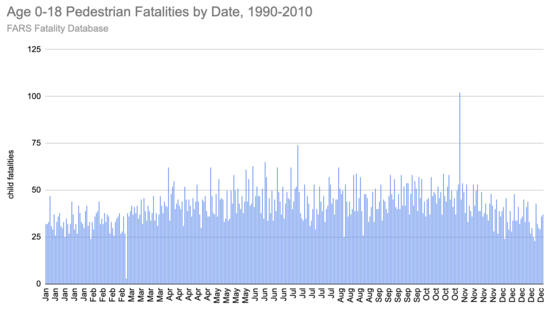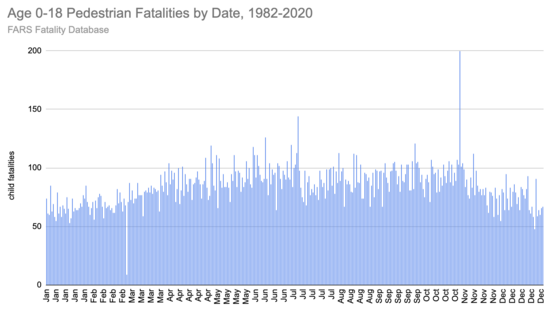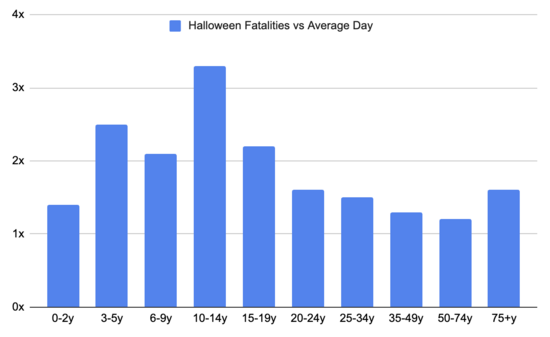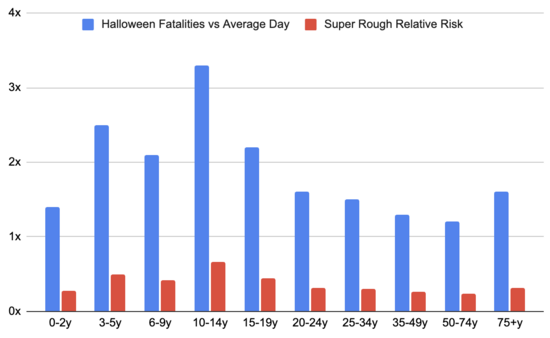content warning: discussion of child fatalities
I've seen this chart going around:
Sperling and Smith created it from NHTSA FARS data, and there have been lots of news stories about it or the underlying data. Some people have a "lets make costumes brighter" angle, some see this as ammunition in the fight against car-centric culture (which I support), some people want to move Halloween earlier in the day. But I think everyone is missing the point: Halloween is actually one of the safest days to be out walking as a kid.
Let's look at the data. I started by replicating the chart to verify I was doing it correctly (code):
The dip on February 29th is mostly just that this day only occurs once every four years, so it has about a quarter the deaths you'd expect. But what about the spike on 4/30? On April 30th 1992 someone drove their car into a large group of 3rd graders on a field trip, and one of them died. It turns out the FARS records can include cases where someone else died in the same accident. Filtering to just the records representing deaths I get:
The data available actually goes back to 1982 and now runs to 2020, so we can expand it a bit:
We can also break down by age, since "child" can mean a range of things and most people are likely thinking mostly about younger children:
All this is to confirm the original chart: more children do die on Halloween than on a typical day. But I still don't think that's a reason to keep your kids home on Halloween, even when you set aside the consideration that Halloween is an especially fun time to be a child pedestrian.
The issue is, there are a lot more kids out on Halloween than the typical day. If you learned that more people died in car crashes in the US (42k/y) than in Paraguay (1.6k/y) you wouldn't conclude that Paraguay's roads are safer: the US has 50x more people than Paraguay! We would ideally scale the initial chart by the number of children out walking on any given day, but I don't think anyone has numbers on this. Very roughly, though, maybe it's something like 5x as many people (kids, parents, grandparents) out on foot on Halloween than the typical day?
Every pedestrian is rolling some dice. The dice are pretty favorable: of the ~70M people under age 18 in the US only 320 died in 2020 by being hit by a car. But you still might want to avoid days where the dice were less favorable than usual. Looking at the original chart you might conclude that Halloween was one of those days, but if there are a lot more kids walking around on Halloween it's actually one of the safer days.
Comment via: facebook
